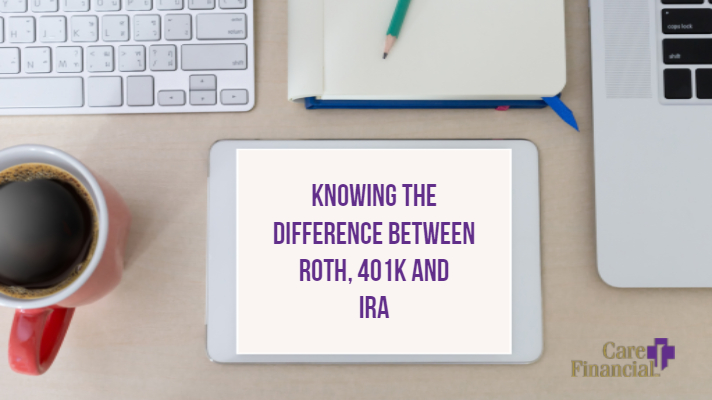Saving for retirement is extremely important because it helps you to set up your financial future and ensure that it is secure. A few common terms you have probably heard when referring to retirement savings are Roth IRA, 401k, and traditional IRA. Keep reading below as we break down the differences in these savings.
Roth IRA
An IRA Account is set up directly between an individual and an investment firm. Employers are not involved in the contribution of an IRA and because of this, there is no opportunity for an employer to match an employee’s contribution amount. Money that is added to a Roth IRA is after-tax money, so no income taxes are levied once you begin withdrawing money during your retirement. Also, all of the additional investment money you gain in the account is untaxed. One drawback of Roth IRA accounts is that the amount you can contribute is smaller. For 2018, the maximum annual contribution is $5,500 for individuals under the age of 50. If you are 50 or older, you can contribute $6,500 per year. If you earn more than $135,000 per year, then you are not able to contribute. If you believe that you will be in a higher income tax bracket upon your retirement, then a Roth IRA may be best for you.
401K
A 401K is an employer-sponsored deferred-income plan. 401K plans are designed by employers and allow employees to designate a certain amount of each paycheck and put it in their 401K plan. The contributions occur before taxes are deducted from paychecks. Investment options vary tremendously when it comes to 401ks and is dependent upon the provider. Any gained investment in the 401k account is not taxed by the IRS. Taxation for 401k accounts happens once you reach retirement age and begin withdrawing funds from the plan. As of 2019, the limit for 401k contributions is $18,500 for those under the age of 50. If you are over the age of 50, you can contribute an additional $6,000. 401k plans are the most beneficial if an employer offers a match. If your employer offers a match to your 401k, that means they will contribute additional funds to your account.
IRA
A traditional IRA allows you to make tax-deductible contributions every year. These contributions then grow tax-deferred until you retire. All of the income that you withdraw from the account upon retirement will then be taxed as income ordinarily would be. Similar to Roth IRAs, the amount you can contribute per year is $5,500 if you are under 50, and $6,500 if you are 50 or older. If you remove any money from the account prior to when you are eligible for retirement, you will incur a 10% penalty and standard tax rates. However, there are exceptions for these penalties dependent upon the circumstance.
As you can tell, each account listed above has benefits and all of the accounts allow you to begin saving for your future. If you have any further questions regarding retirement savings, reach out to Care Financial today.
Care Financial is a privately owned and operated business providing families, individuals and businesses with comprehensive wealth management strategies. Contact us online at http://www.carefinancialonline.com or call us at 251-633-7122.
© Southern View Media 2018: Reproduction without explicit permission is prohibited. All Rights Reserved. “We Put You Online So You Don’t Get Left Behind.”


